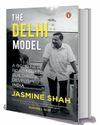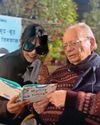
On a fateful morning in June 2023, Khairunnisa Jalaluddin (name changed), a 55-year-old homemaker from Gudalur in Tamil Nadu, woke up with a pounding headache. As she tried to sit up, a wave of dizziness engulfed her. “To our horror, we discovered that her one side was paralysed, and her speech was slurred,”recalls Shajir, Khairunnisa’s son, who rushed her to the nearest primary care centre. “At the hospital, they asked us to get a CT scan, which was not available locally. So we crossed the border and travelled approximately 50km from our village to a hospital in Sulthan Bathery in Wayanad in Kerala.”There, Khairunnisa was diagnosed with stroke and promptly administered thrombolytic therapy, wherein clot-busting medications were injected directly into the clot to dissolve it.
In current scientific understanding, an intravenous medicine that can break up a clot has to be given within 4.5 hours of the symptoms showing up. Typically, an expensive and strong clot-busting drug like recombinanttissue plasminogen activator (r-tPA) is used to dissolve the clot and open the artery to restore flow to the brain. In some cases, particularly when the clot is too big, this drug is not effective. And if the treatment is given after six hours of the onset of stroke, then catheters and clot retrieval devices (stent retriever) are inserted through a 1mm hole in the artery of the groin (femoral artery) to reach and open the blocked segment of the brain artery.
This story is from the June 02, 2024 edition of THE WEEK India.
Start your 7-day Magzter GOLD free trial to access thousands of curated premium stories, and 9,000+ magazines and newspapers.
Already a subscriber ? Sign In
This story is from the June 02, 2024 edition of THE WEEK India.
Start your 7-day Magzter GOLD free trial to access thousands of curated premium stories, and 9,000+ magazines and newspapers.
Already a subscriber? Sign In

Forging the future
As the curtain falls on 2024, I take pride in the extraordinary milestones achieved under the leadership of Prime Minister Narendra Modi. This year stands as a testament to the Modi government's resolve to forge a resilient and forward-looking Bharat. From groundbreaking advancements in infrastructure to visionary global initiatives, these efforts resonate deeply with the vision of Viksit Bharat.

Our strange democracy
Abraham Lincoln is lauded as among the very best presidents the US ever had: the statesman par excellence successfully steered the nation through the devastating and perilous years of the American civil war. Not only did Lincoln manage to keep his country united, he also ensured the passage of the 13th amendment to the US constitution, which abolished slavery.

Five years of post-pandemic fashion
It has been five years since we discovered what Covid-19 was, and five years since it disrupted the world forever. The World Health Organization activated their emergency systems on January 1, 2020, and informed the world by January 4, 2020. By the end of that week, they had set guidelines for various countries to follow. Comparable to the Spanish flu of 1918, more than 7 million people have died of Covid according to official data. Unofficially, no one has an idea. WHO has just this week asked China to provide critical data to understand the virus's origins as a “moral and scientific imperative”.

Community spirit
Rhythm of Dammam opens a window to the world of African-origin Siddis of Uttara Kannada

'Breaking' down a scandal
Society Girl is not just a case study of a high-profile death in Pakistan but also a stark commentary on media trials

Progress card
Jasmine Shah's book tells you what the AAP has achieved in Delhi in the last 10 years

SENSE IN NONSENSE
In his latest book of poetry, Ruskin Bond is at his funniest

Get ready for Trump bump
The ‘butterfly effect’ is a beautiful, mysterious metaphor of the planet’s interconnectedness.

QUIET FLOWS THE FAITH
The melding of an ancient amorphous faith and the latest science; of an antique tradition and new practices; ways of life older than memory and new expressions is happening at Prayagraj in Uttar Pradesh.

Trash to treasure
How a weed-choked Dal Lake spurred Maninder Singh's journey to become a waste management visionary